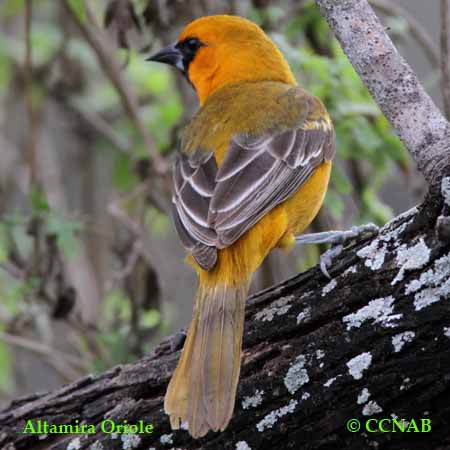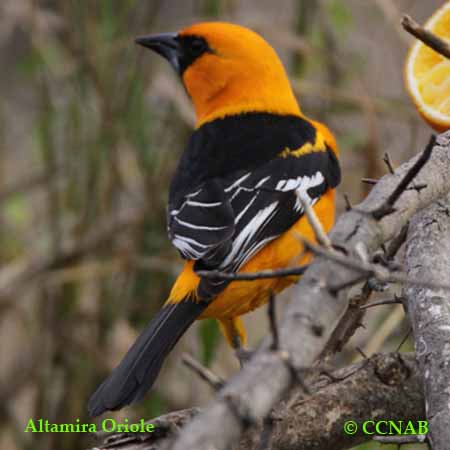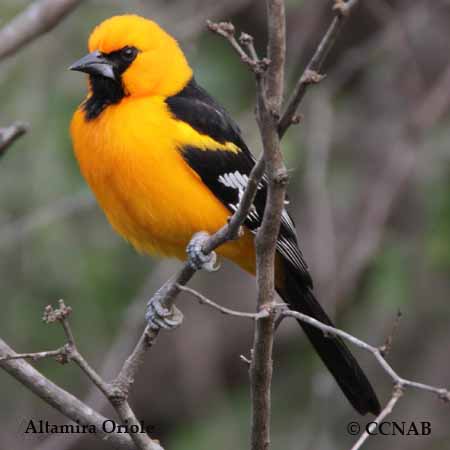North American Bird Search Box
This search box can be used to find bird species using bird's english, french or latin name, or to identify bird by its 4 letter Alpha Code
Field Guide for all the Birds of North America
Altamira Oriole
4 Letter (english names) Alpha Code: ALOR (2)
Oriole à gros bec
Icterus gularis
Information, images and range maps on over 1,000 birds of North America, including sub-species, vagrants, introduced birds and possibilities
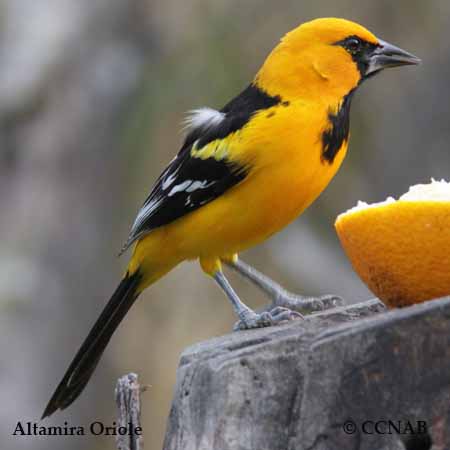
Species; The Altamira Oriole (Icterus gularis), is the largest member of the oriole family seen in North America. It is found in southeastern Texas along the Rio Grande. This oriole is a regular visitor to bird feeders as it is attracted to oranges and other types of fruit.
Distinctions; This mostly dark orange bird, is identified by its orange head and body, a black mask around its eyes and bill which extends down into a black bib. Male and female birds have the same plumage, whereas the juvenile will show more of an olive green on its back and tail rather than black. The adults have black wings and tail feathers with yellow scapulars and white wingbars.
Voice; Slow clear whistles.
Nesting: Three to four pale blue eggs per brood. Orioles build their nest high in the crown of trees and sometimes on a utility wire. These nests are in the shape of hanging baskets, attached to a limb with long basket-like handles. The nests are built from plant fibre, bark from branches, grasses, strings and any other such materials that can be manipulated.
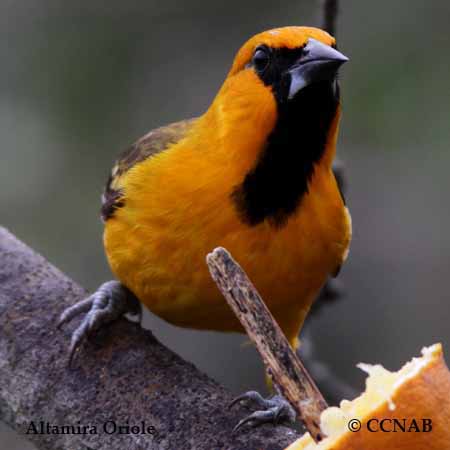
Life, Habitat & Pictures of the North American Orioles
| B L | W W | W | Family | Latin Name |
|---|---|---|---|---|
| 10" 25.5cm | 14" 35.6cm | 2oz 56.7g | Icteridae | Icterus gularis |
- Summer
- Year Around
- Winter
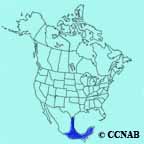
Distribution: The Altamira Oriole was first reportedly seen in Texas in the 1930's. It is a common bird seen throughout Mexico and Central America but is considered threatened in the USA. This bird species is non-migratory. It is suspected that the male and the female are monogamous and are partners for life.
Reference to Other Bird Site:
ABA - American Birding Association This site represents an organization that maintains official records of all birds species that have been proven to have been seen inside the perimeters of the North American Continent and the surrounding bodies of water. Regular revised versions are posted to keep the bird list current at all times. This is the list used by all serious birders over their lifetime. You may be aware of the movie called the "Big Year". It was with this list that all the competing birders used in an attempt to set a new record as to how many bird species that could be seen by an individual birder in one calendar year.
